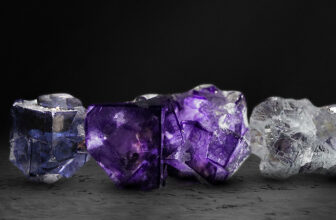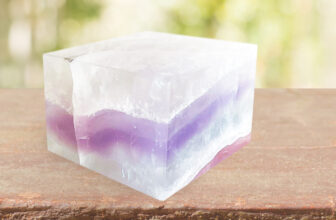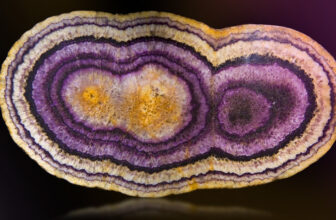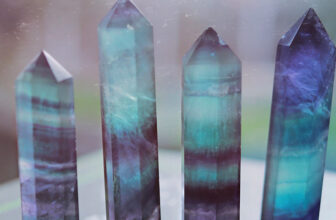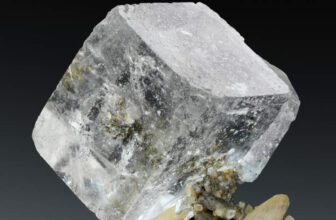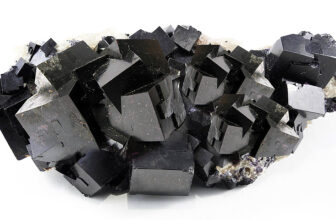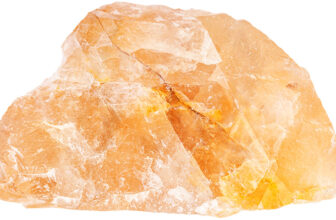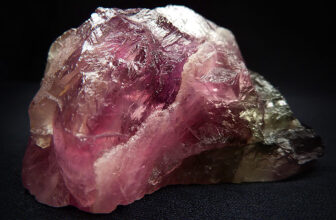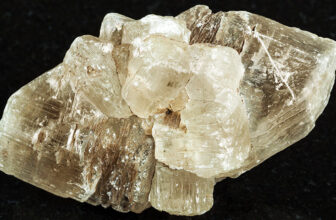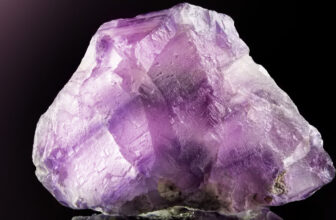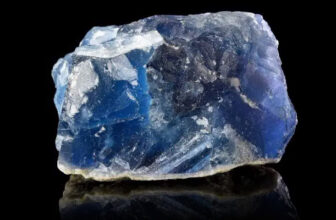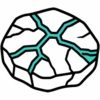Crystals on Matrix
 The Beauty of Connection
The Beauty of Connection
Some crystals never wander far from home. Instead, they stay rooted in the very stone that gave them life – a shimmering bloom still attached to its bed of origin. These are crystals on matrix, and their beauty lies not just in what they are, but in what they represent: connection, patience, and the perfect balance between growth and grounding.
Why are collectors, scientists, and healers equally fascinated by these bonded formations? Perhaps because they reveal more than just geological truth. A crystal on matrix is a snapshot of creation in progress, a frozen moment when nature’s chemistry and geometry align. Each specimen tells a story – of molten minerals cooling, of ancient waters seeping through fractures, of slow alchemy unfolding deep beneath the surface.
Scientifically, a crystal on matrix is one that grew directly on its host rock – the very foundation from which it emerged. Unlike loose or tumbled stones, these formations preserve the true context of growth, showing exactly how and where a crystal formed.
Geological Formation
How does such an exquisite union come to be? The process begins far below the surface, in a realm where heat, water, and time weave slow miracles.
Deep within the Earth, mineral-rich hydrothermal fluids move through cracks and veins in existing rock. These fluids carry dissolved elements – quartz, calcite, tourmaline, fluorite – searching for space to settle. When the conditions shift – a drop in temperature, a change in pressure, or a subtle chemical reaction – those minerals begin to crystallize right onto the surface of the host rock.
Step by step, this quiet choreography unfolds:
- A rock forms – igneous, metamorphic, or sedimentary, depending on its origin story.
- Mineral-laden fluids seep into fractures and cavities, saturating every micro-space.
- With time, atoms arrange themselves into orderly lattices, growing crystal structures directly from the matrix.
- Layer by layer, these crystalline shapes emerge, sometimes forming perfect points, clusters, or drusy coatings that sparkle like a dusting of frost.
The matrix itself plays a vital role. Its composition and chemistry influence the crystal’s color, clarity, and form. A quartz point growing on granite might take on subtle smoky tones from nearby feldspar. A layer of basalt may deepen the hue of amethyst above it. Even microscopic variations in the host rock can alter how the crystal orients itself – a conversation between two materials over millions of years.
From a geological perspective, these specimens are natural records of environment and transformation. They help scientists trace how mineral systems evolved and how Earth’s interior changed through time.
Form, Texture, and Contrast
At first glance, crystals on matrix look like tiny worlds frozen in motion – elegant towers rising from rugged terrain. Their beauty lies in contrast: the rough, opaque texture of the base against the luminescent geometry of crystal formations. It’s a dance of opposites – matte and glossy, dense and transparent, grounded and ethereal.
Each specimen is a miniature landscape. The crystal portion often grows in sharp, precise lines while the matrix remains coarse and organic. Together, they create a visual story of transformation – from raw earth to radiant order.
Common pairings show this harmony beautifully:
- Quartz on Feldspar or Granite: Clear or smoky crystals standing tall on pale, grainy stone.
- Amethyst on Basalt: Purple clusters bursting from dark volcanic rock like galaxies born from starlit caves.
- Calcite on Limestone: Creamy formations that seem to soften the roughness beneath them.
- Tourmaline in Mica or Lepidolite: Black or pink rods framed by shimmering silvery layers.
- Pyrite on Shale or Quartz: Gleaming cubes contrasting against dull or crystalline foundations.
To identify a true crystal-on-matrix specimen, look for seamless integration. The crystal must grow directly from the host – no glue, no artificial attachment, no visible separation. Often, the contact zone between crystal and matrix will show gradual transitions or micro-crystals bridging both surfaces.
Varieties of Matrix Combinations
Every crystal-and-matrix pairing tells a slightly different story. Some emphasize form; others highlight color or texture. Together, they reveal the infinite ways nature composes its masterpieces.
By Mineral Species:
- Quartz on Matrix: Found worldwide, from Brazil to Arkansas. The clusters may be clear, smoky, or amethyst-tinted – each reflecting the mineral makeup of its host.
- Beryl on Feldspar or Mica: Aquamarine or emerald crystals nestled in pale or silvery rock, evoking ocean hues within mountain stone.
- Fluorite on Quartz or Calcite: Cubic geometry meeting prismatic sparkle, often with vivid purples, greens, or blues.
- Garnet on Schist: Deep red spheres emerging from flaky, reflective surfaces – the embodiment of resilience under pressure.
By Structure and Presentation:
- Single Crystal on Matrix: A solitary point, commanding attention like a mountain peak. These are prized for their clarity and symmetry.
- Cluster on Matrix: Groups of intergrown crystals radiating outward, symbolizing unity and balance.
- Drusy Matrix: A sparkling carpet of micro-crystals coating the surface – a celestial shimmer across stone.
Collectors adore matrix specimens because they’re authentic geological portraits. Unlike loose or polished stones, these remain untouched narratives of origin, preserving exactly how the crystal once lived. In museums and private collections alike, they serve as both teaching tools and meditative symbols – reminders that creation is always collaborative.
The Spiritual Bond
In metaphysical traditions, crystals on matrix are considered anchors of energy. They blend the upward, expansive vibration of crystal growth with the deep, stabilizing force of the Earth beneath. When life feels scattered or change pulls you off-center, these stones offer a steady reminder: your power increases when you stay connected to your roots.
Energetically, they symbolize integration – the union of spirit and matter, dream and action, intention and foundation. A crystal rising from its matrix mirrors the soul’s evolution: reaching toward light while remaining firmly supported by experience.
Emotionally, these formations help those who feel “ungrounded.” They’re often used in meditation spaces or healing rooms to create stability during transformation. Their presence encourages patience – the understanding that spiritual growth is not escape, but embodiment.
Each pairing carries its own message:
- Quartz on Matrix amplifies clarity and focus while keeping the energy balanced.
- Amethyst on Matrix helps anchor intuition into practical insight.
- Calcite on Matrix nurtures emotional steadiness through change.
- Tourmaline on Lepidolite grounds the heart while soothing the mind.
Ultimately, crystals on matrix remind us that roots are not restraints. They are the quiet strength that allows growth to flourish. Just as every crystal relies on its host stone to take form, we too rely on our foundations – the unseen layers of memory, effort, and love that hold us steady as we rise.

 The Beauty of Connection
The Beauty of Connection